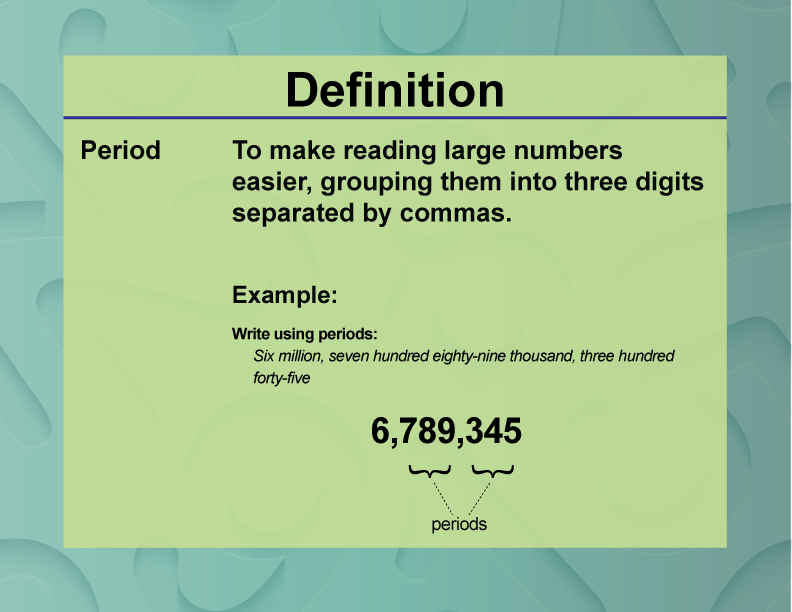
Display Title
Definition--Place Value Concepts--Period
Display Title
Period

Topic
Place Value
Definition
A period is a group of three digits in a number, separated by commas, representing thousands, millions, billions, etc.
Description
A period is a grouping of three digits in a number, separated by commas, that helps in reading and understanding large numbers. Each period represents a different place value, such as thousands, millions, billions, etc. For example, in the number 1,234,567, the digits 234 are in the thousands period, and the digits 567 are in the units period.
In real-world applications, periods are used in financial statements, population statistics, and scientific data to make large numbers more readable and understandable. They help in understanding the magnitude of large numbers and making accurate calculations.
In algebra, periods help students understand the concept of large numbers and their operations. They are important for solving problems involving large numbers and scientific notation.
Teaching periods is relevant to math education because they help students grasp the magnitude of large numbers and their significance in various contexts. They also prepare students for advanced mathematical concepts involving large numbers.
Teacher's Script: "Let's look at the number 1,234,567. The digits 234 are in the thousands period, and the digits 567 are in the hundreds period."
For a complete collection of terms related to Place Value click on this link: Place Value Collection
| Common Core Standards | CCSS.MATH.CONTENT.1.NBT.B.2, CCSS.MATH.CONTENT.1.NBT.C.4, CCSS.MATH.CONTENT.2.NBT.A.1, CCSS.MATH.CONTENT.3.NBT.A.1, CCSS.MATH.CONTENT.4.NBT.A.1, CCSS.MATH.CONTENT.5.NBT.A.4 |
|---|---|
| Grade Range | 1 - 4 |
| Curriculum Nodes |
Arithmetic • Numbers and Patterns • Place Value |
| Copyright Year | 2021 |
| Keywords | place value |